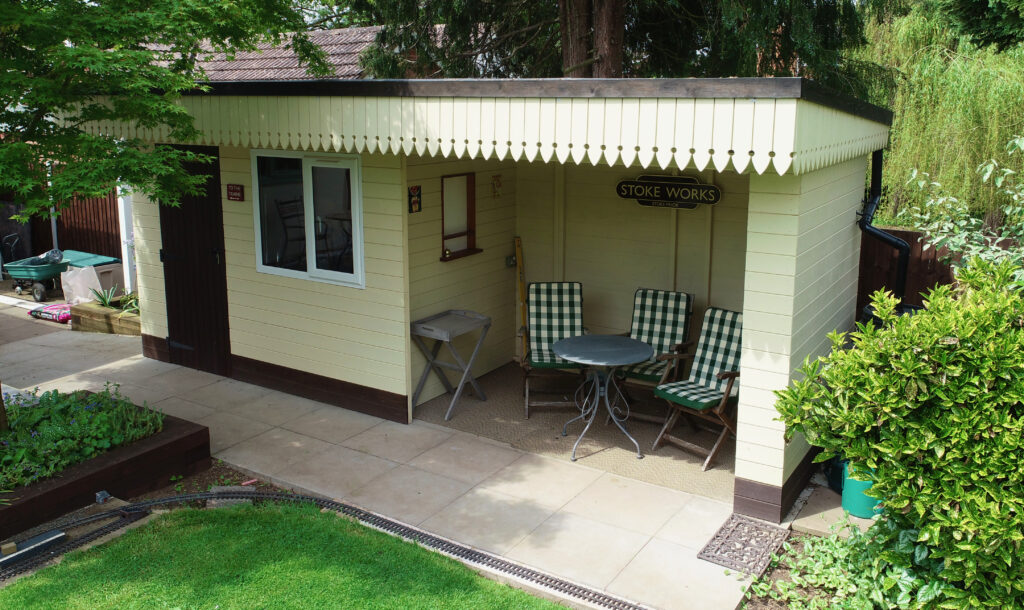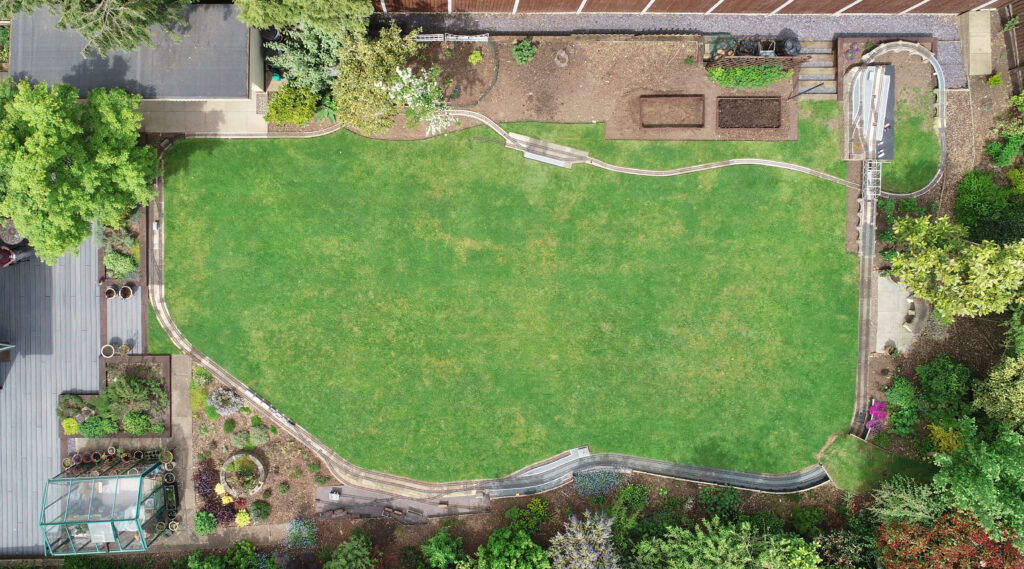About the Railway
First Principles
My aim was to create a garden that could be enjoyed by all, not just railway enthusiasts—a garden that is a pleasure to sit and relax in, i.e., a garden with a railway, not a garden railway. As the railway needed to complement and enhance the garden, it was determined that the railway would be at ground level. When I’m too old to operate a ground-level railway, I will take it up, sell everything, and find a new hobby.
A Film Set
My other passion is filmmaking. On my previous railway, I rarely ran anything purely for pleasure. The railway was my film set, and I wanted the new railway to fulfill the same role. This determined that the track on the new railway needed to be laid, as far as possible, well away from any structures which would look incongruous when filming.
My favorite garden railways are those based on British narrow-gauge lines such as the Leek and Manifold Valley, the Welshpool and Llanfair, the Welsh Highland, and the Lynton and Barnstaple. I have a collection of locomotives and rolling stock suitable for this type of railway. However, having a narrow-gauge line doesn’t lend itself to storytelling, whereas a line populated by Thomas and his friends does. So, the railway I created was a compromise. It has both double track and single track sections. The single track section will double as either a British narrow-gauge line or an Island of Sodor branch line.
Naming the Railway
I’ve always loved the name of the Cleobury Mortimer and Ditton Priors Light Railway. What a wonderful name. In my mind, it conjures up an image of a little-used country railway running through quintessential English countryside, with tiny stations serving sparsely populated villages with very little passenger traffic but, in its heyday, providing an essential means of moving farm produce and livestock. I now live in Stoke Prior, a village on the outskirts of Bromsgrove and near to the village of Wychbold. So, the name I chose was the Wychbold and Stoke Prior Railway (WASP).
Video
The track layout can be seen in this video taken in May 2023: https://youtu.be/2K4mU9u2mHo
More Information
You can find more information about the layout and how it is being developed at Wychbold and Stoke Prior Railway Blog.
Videos of this and my previous garden railway can also be found on my YouTube channel.
Building the Railway
Trackbed When we moved into our bungalow, we inherited loads of paving slabs, so I decided to use these as the trackbed. The advantages of using this method were:
- Smooth flat running
- Suppresses weed growth
- Zero cost
Loose ballast is gradually being added on top of the slabs.
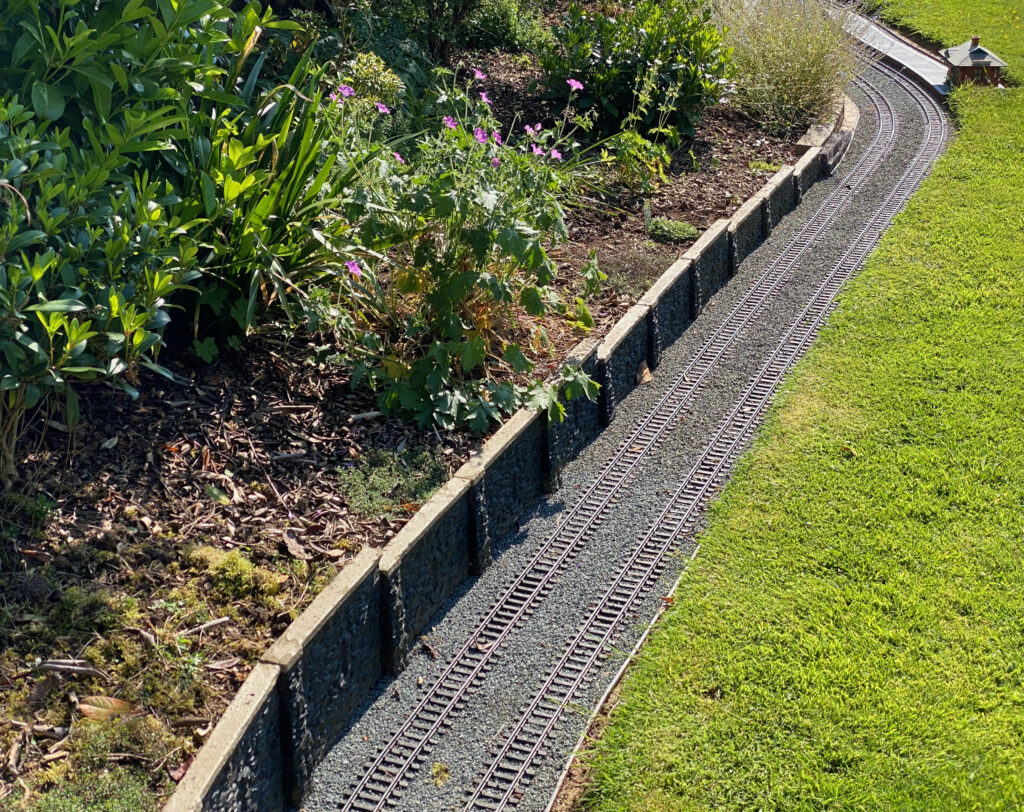
Tunnel The double track mainline passes through a tunnel at the top of the garden. It was made out of 3mm foamboard, which allowed me to add details, including refuges for railway workers. Once the foamboard tunnel had been placed in position, concrete was poured over it, and slabs added on top. The tunnel portals were purchased from Garden Railway Specialists, along with the slate wall sections which line the cutting. Finally, turf was added to make a path up to the shed.
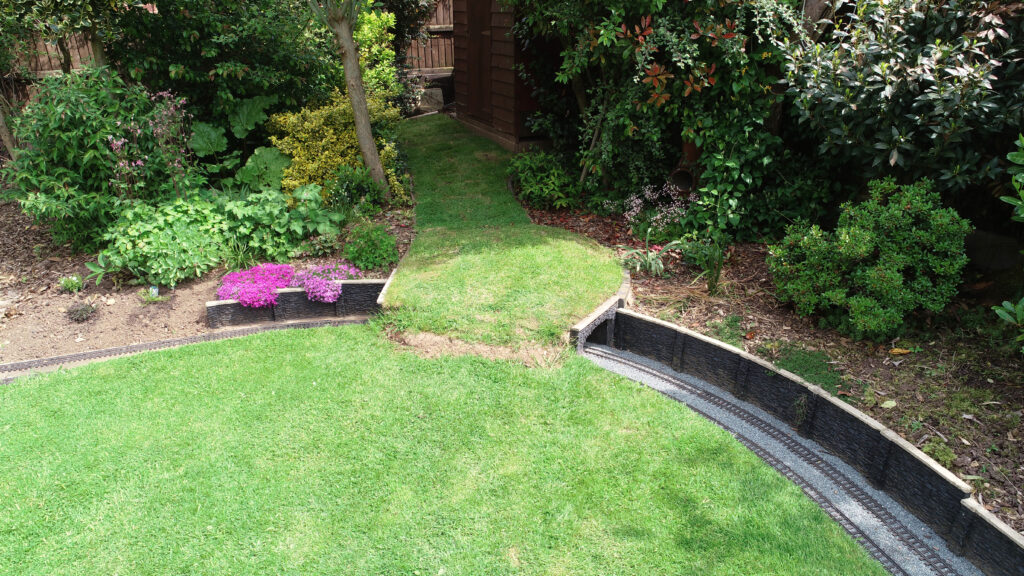

The Viaduct The viaduct was purchased from Cain Howley. Unfortunately, it was designed to carry single track. So I cut each of the sections down the middle using an angle grinder and then concreted in between.

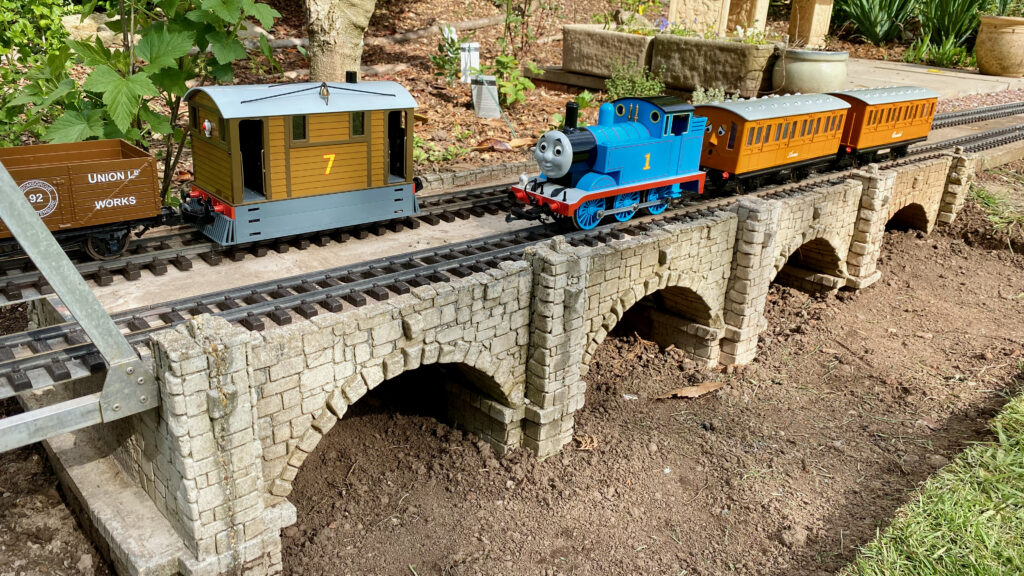
Bridges This bridge was made from U-shaped aluminum channel section to go over the pond on my previous railway. It also had to be modified to take double track. The single track branch line passes under the mainline after descending on a spiral. Two sections of the spiral needed bridging. Both bridge decks were made from 9mm soffit board, and the walls were constructed from 3mm foamboard. The girder detail is from Plastruct. Here’s the completed bridge.
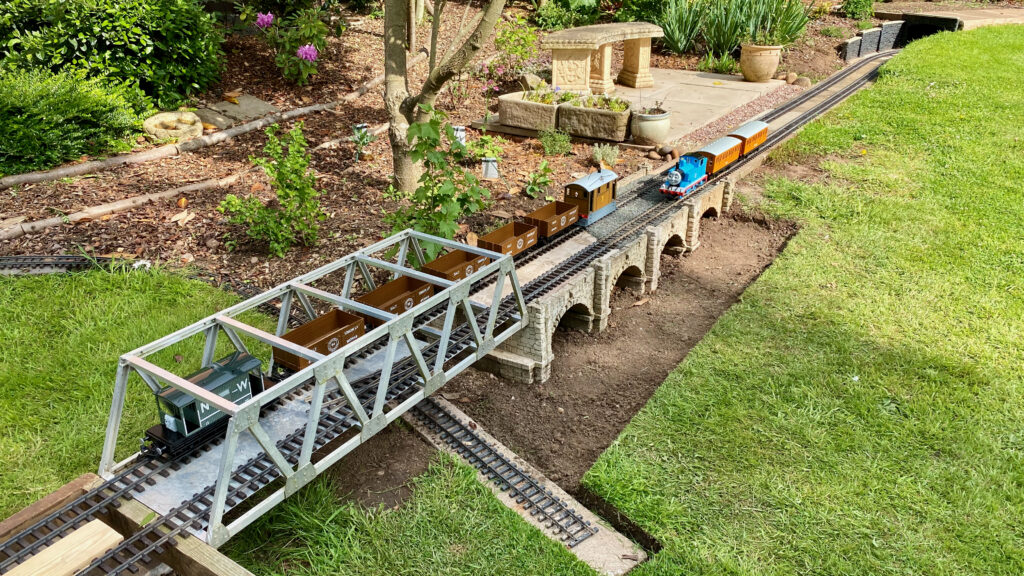
Stations The station platforms were made from 9mm soffit board covered in 3mm foamboard.

Gallery
The Background
Members
Keith Edwards
Location
Worcestershire
Size
Largish Garden
Started
June 2020
Theme
Thomas and Friends / British Narrow Gauge

